aMaZiNg pIcZs oF eYeZ eVeR
Download as ppt, pdf2 likes288 views
amazing andd veryy unique photos of eyes ever seen.........!!!!!!!!!!
1 of 25
Download to read offline
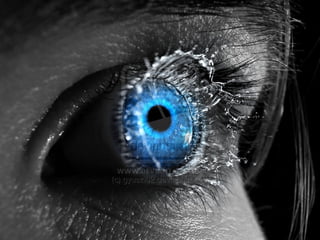

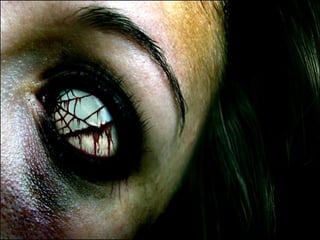





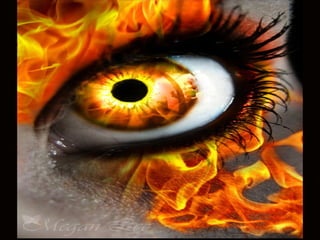
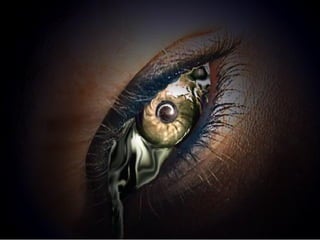
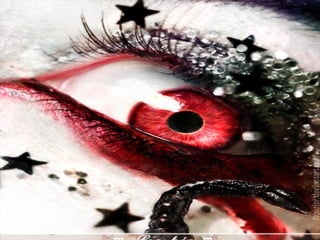
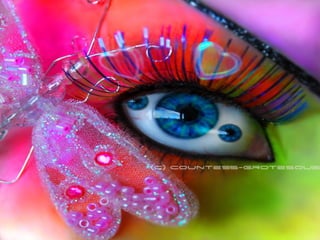

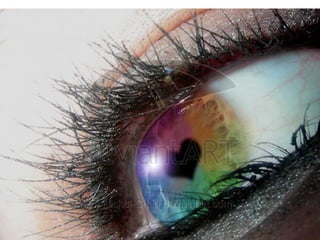

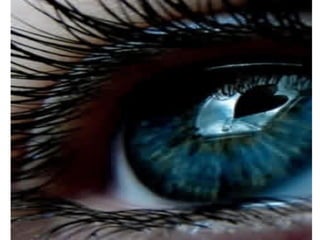
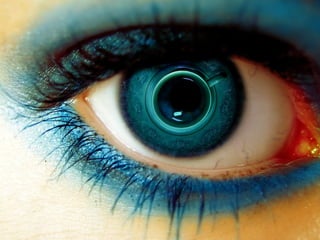

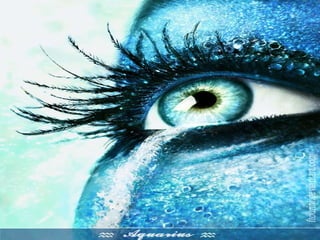
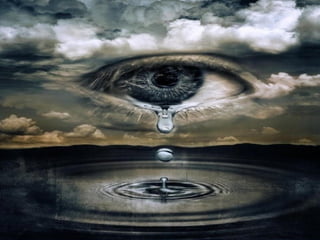
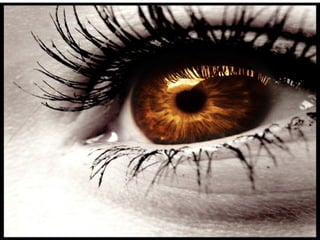
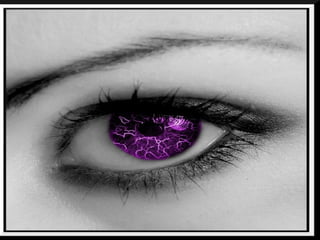
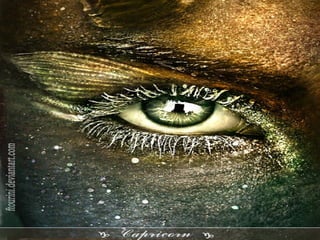
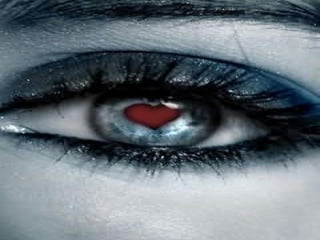
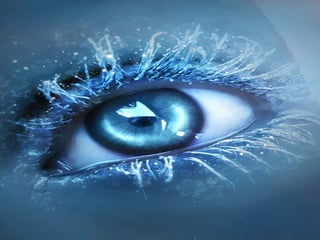
Ad
Recommended
Goals, Critical Sucess Factors
Goals, Critical Sucess FactorsYatish Dasari
?
The document discusses key goals, critical success factors, and prime measures for shipping companies at different stages of their lifecycle, including new entrants focused on establishing operations, growing companies expanding their business, mature companies maintaining performance, and declining companies seeking to stabilize their position.Architectural media systems_application_guide_-_sporting_venues
Architectural media systems_application_guide_-_sporting_venuesDaniel Andozia
?
This document provides a summary of the audio system setup at a sporting venue. A Dante-enabled Soundcraft Vi1 console routes audio over Ethernet to multiple BSS Soundweb London devices located in equipment racks around the venue. The Soundweb devices process zone audio and send it over BLU Link to Crown DriveCore amplifiers, which power speakers in 16 zones covering seating areas as well as utility spaces. Wireless microphones connect directly to the console and Soundweb devices to provide announcements. The HiQnet Audio Architect software allows remote control and monitoring of the entire system.Architectural media systems_application_guide_-_sporting_venues
Architectural media systems_application_guide_-_sporting_venuesDaniel Andozia
?
This document provides a summary of the audio system setup at a sporting venue. A Dante-enabled Soundcraft Vi1 console routes audio over Ethernet to multiple BSS Soundweb London devices located in equipment racks around the venue. The Soundweb devices process zone audio and send it over BLU Link to Crown DriveCore amplifiers, which power speakers in 16 zones covering seating areas as well as utility spaces. Wireless microphones connect directly to the console and Soundweb devices to provide announcements. The HiQnet Audio Architect interface allows remote control and monitoring of the system.Pres for LinkedIn
Pres for LinkedInBartosz I?owski
?
This document summarizes a research project on synthesizing new photonic band gap materials using dielectric-metal-dielectric particles. (2) The researcher synthesized silica, silver-coated silica, and silica-silver-silica particles and used a controlled evaporation method to assemble them into photonic crystals. (3) Optical measurements showed that silica-silver particle photonic crystals exhibited a red-shifted photonic band gap compared to pure silica photonicBrand reverse engg
Brand reverse enggYatish Dasari
?
Scooters India and Bajaj Auto are two major Indian vehicle manufacturers. Scooters India was established in 1972 by the Government of India and produced scooters and three-wheelers. It struggled financially and was losing money from 1972 to 1996. Bajaj Auto was established privately in 1945 and is now the second largest two-wheeler manufacturer in India, with popular scooters and motorcycles. While Scooters India struggled due to poor management strategies and financial issues, Bajaj Auto employed successful strategies like monitoring competitors, focusing on innovation, and expanding globally to become a market leader. Currently, Scooters India is seeking a private buyer due to its financial troubles, while Bajaj AutoBhartiya Janta Party
Bhartiya Janta PartyDeps ..
?
The Bahujan Samaj Party (BSP) was founded in 1984 by Kanshi Ram to advocate for Dalit rights and electoral participation. It originated from the Backward and Minority Central Government Employees Federation, which Kanshi Ram started in 1971 to organize Dalit government workers. The BSP expanded this organizing and began promoting self-activity and campaigns for Dalits and other lower castes. It formed affiliated organizations that eventually became the BSP, contesting elections and growing into a major political party centered on issues facing Untouchables and lower castes in India.Lavender
LavenderDeps ..
?
Lavender has a long history of use in bathing and as a culinary ingredient. It is a flowering shrub with purple, blue, pink or white flowers. Lavender flowers and essential oils are commonly used in aromatherapy for their calming scent. They can also be consumed as teas, extracts, or blended with other teas. While generally safe, lavender can potentially cause allergic reactions or side effects like constipation, nausea or drowsiness if consumed in large amounts.Life process excretion
Life process excretionDeps ..
?
The document discusses excretion in humans and other organisms. It describes the human urinary system, which includes the kidneys, ureters, bladder and urethra, as the main organs that remove nitrogenous wastes like urea from the bloodstream in the form of urine. The kidneys play an important role in homeostasis by filtering blood and regulating the levels of water, salts and other substances in the body. Wastes pass through nephrons in the kidneys and exit as urine through the ureters to the bladder. Plants remove gaseous wastes like carbon dioxide through stomata and transpire excess water in the same way.Eyes
EyesDeps ..
?
This document summarizes common eye defects. It describes myopia as nearsightedness where light focuses in front of the retina, causing distant objects to appear blurred. Hypermetropia is farsightedness where sufferers have difficulty focusing on near objects. Presbyopia is an age-related defect where the ciliary muscles weaken, making it hard to see nearby objects clearly. Cataracts are a clouding of the lens caused by protein clumping. Astigmatism occurs when the cornea is irregularly curved, distorting images.Respiration
RespirationDeps ..
?
Respiration is the process by which organisms convert food into energy, using oxygen and releasing carbon dioxide and water. It occurs via two types of respiration - aerobic and anaerobic. Aerobic respiration uses oxygen to fully break down glucose, producing more energy. Anaerobic respiration occurs without oxygen, producing less energy and generating lactic acid or ethanol. In humans, respiration involves the respiratory system - nostrils, nasal cavity, pharynx, larynx, trachea, bronchi, bronchioles and lungs - which work with the diaphragm and rib cage to inhale oxygen and exhale carbon dioxide through breathing.Rubber
RubberDeps ..
?
The document discusses rubber and rubber trees. It describes how rubber trees are used to produce rubber sap which is then made into numerous products like tires, gloves, and toys. It provides care instructions for rubber trees as houseplants, noting they thrive in indirect light and need moist soil with good drainage. The document also explains how rubber plantations were established in various tropical countries to cultivate rubber trees.Terrorism
TerrorismDeps ..
?
Terrorism involves the unlawful use of violence against people or property to intimidate or coerce governments for political or social goals. The document outlines different types of domestic and international terrorism such as the Oklahoma City bombing and Tokyo subway sarin gas attack. It also discusses the causes and future of terrorism, noting that terrorist groups are adapting their capabilities. To combat terrorism, the document suggests increasing support from politicians, police, and other countries while prosecuting terrorists.Atlantis2 100613201743-phpapp02
Atlantis2 100613201743-phpapp02Deps ..
?
According to an ancient Greek philosopher Plato, Atlantis was an advanced island civilization that sank into the ocean. While it's uncertain if Atlantis truly existed, Plato's story describes it as a place of great learning and prosperity founded by the god Poseidon until it was suddenly lost to the sea around 1400 BC. The legend of the lost city of Atlantis has captured people's imaginations for centuries.The lost city of atlantis
The lost city of atlantisDeps ..
?
The document discusses the lost city of Atlantis according to Plato's writings and various theories about its existence and location. Plato described Atlantis as an advanced island civilization larger than Libya and Asia that sank into the ocean following a volcanic eruption and floods. While some believe Atlantis was real and its remains have been discovered underwater, there is still debate as to whether Plato intended Atlantis as fiction or as a representation of real events.Space travel
Space travelDeps ..
?
Laika was the first dog in space, launched by the Soviet Union in 1957 aboard Sputnik 2. She died within hours from overheating and stress. Several other animals were launched during early Soviet space missions to test life support systems, including more dogs, mice, rats and other small animals. Some of these missions resulted in deaths of the animals during launch or re-entry. The Soviet Union also launched several early human spaceflight missions including Yuri Gagarin aboard Vostok 1 in 1961, the first human in space, and Valentina Tereshkova aboard Vostok 5 in 1963, the first woman in space. The United States launched its first human spaceflight, Freedom 7 piloted by Alan SheStates of matter
States of matterDeps ..
?
The document discusses the different states of matter including solid, liquid, gas, plasma, and Bose-Einstein condensates. Solids retain a fixed shape and volume, with particles locked in place. Liquids can flow and take the shape of containers as particles can move past each other. Gases assume the shape and volume of containers with particles having freedom of movement and space between them.Laser and optical fibers
Laser and optical fibersDeps ..
?
The document discusses fiber lasers, optical fibers, and their advantages and disadvantages. Fiber lasers use rare-earth doped optical fibers as the gain medium and fiber Bragg gratings instead of mirrors. They have advantages like high power, stability, reliability, and compact size. Disadvantages include nonlinear effects at high power. Optical fibers transmit light through total internal reflection in their glass cores and are used for telecommunications due to advantages like huge bandwidth, small size, low cost, and security.Atoms
AtomsDeps ..
?
This document defines key concepts related to atoms, molecules, and ions:
1) Atoms are the fundamental units that all matter is made of, consisting of protons, neutrons, and electrons.
2) Molecules are formed when two or more atoms bond together and can be monoatomic, diatomic, or polyatomic.
3) Ions are formed when atoms gain or lose electrons to have a positive or negative charge, and can be monatomic or polyatomic.加拿大本科毕业证奎斯特大学文凭证书蚕鲍颁学生卡办理学历认证
加拿大本科毕业证奎斯特大学文凭证书蚕鲍颁学生卡办理学历认证taqyed
?
2025年极速办奎斯特大学毕业证【q薇1954292140】学历认证流程奎斯特大学毕业证加拿大本科成绩单制作【q薇1954292140】海外各大学Diploma版本,因为疫情学校推迟发放证书、证书原件丢失补办、没有正常毕业未能认证学历面临就业提供解决办法。当遭遇挂科、旷课导致无法修满学分,或者直接被学校退学,最后无法毕业拿不到毕业证。此时的你一定手足无措,因为留学一场,没有获得毕业证以及学历证明肯定是无法给自己和父母一个交代的。
【复刻奎斯特大学成绩单信封,Buy Quest University Canada Transcripts】
购买日韩成绩单、英国大学成绩单、美国大学成绩单、澳洲大学成绩单、加拿大大学成绩单(q微1954292140)新加坡大学成绩单、新西兰大学成绩单、爱尔兰成绩单、西班牙成绩单、德国成绩单。成绩单的意义主要体现在证明学习能力、评估学术背景、展示综合素质、提高录取率,以及是作为留信认证申请材料的一部分。
奎斯特大学成绩单能够体现您的的学习能力,包括奎斯特大学课程成绩、专业能力、研究能力。(q微1954292140)具体来说,成绩报告单通常包含学生的学习技能与习惯、各科成绩以及老师评语等部分,因此,成绩单不仅是学生学术能力的证明,也是评估学生是否适合某个教育项目的重要依据!
我们承诺采用的是学校原版纸张(原版纸质、底色、纹路)我们工厂拥有全套进口原装设备,特殊工艺都是采用不同机器制作,仿真度基本可以达到100%,所有成品以及工艺效果都可提前给客户展示,不满意可以根据客户要求进行调整,直到满意为止!
【主营项目】
一.奎斯特大学毕业证【q微1954292140】奎斯特大学成绩单、留信认证、使馆认证、教育部认证、雅思托福成绩单、学生卡等!
二.真实使馆公证(即留学回国人员证明,不成功不收费)
三.真实教育部学历学位认证(教育部存档!教育部留服网站永久可查)
四.办理国外各大学文凭(一对一专业服务,可全程监控跟踪进度)制作颁颈迟测学费单英国伦敦城市大学学历认证范本,颁颈迟测成绩单骋笔础修改
制作颁颈迟测学费单英国伦敦城市大学学历认证范本,颁颈迟测成绩单骋笔础修改taqyed
?
2025年极速办伦敦城市大学毕业证【q薇1954292140】学历认证流程伦敦城市大学毕业证英国本科成绩单制作【q薇1954292140】海外各大学Diploma版本,因为疫情学校推迟发放证书、证书原件丢失补办、没有正常毕业未能认证学历面临就业提供解决办法。当遭遇挂科、旷课导致无法修满学分,或者直接被学校退学,最后无法毕业拿不到毕业证。此时的你一定手足无措,因为留学一场,没有获得毕业证以及学历证明肯定是无法给自己和父母一个交代的。
【复刻伦敦城市大学成绩单信封,Buy London Metropolitan University Transcripts】
购买日韩成绩单、英国大学成绩单、美国大学成绩单、澳洲大学成绩单、加拿大大学成绩单(q微1954292140)新加坡大学成绩单、新西兰大学成绩单、爱尔兰成绩单、西班牙成绩单、德国成绩单。成绩单的意义主要体现在证明学习能力、评估学术背景、展示综合素质、提高录取率,以及是作为留信认证申请材料的一部分。
伦敦城市大学成绩单能够体现您的的学习能力,包括伦敦城市大学课程成绩、专业能力、研究能力。(q微1954292140)具体来说,成绩报告单通常包含学生的学习技能与习惯、各科成绩以及老师评语等部分,因此,成绩单不仅是学生学术能力的证明,也是评估学生是否适合某个教育项目的重要依据!
我们承诺采用的是学校原版纸张(原版纸质、底色、纹路)我们工厂拥有全套进口原装设备,特殊工艺都是采用不同机器制作,仿真度基本可以达到100%,所有成品以及工艺效果都可提前给客户展示,不满意可以根据客户要求进行调整,直到满意为止!
【主营项目】
一.伦敦城市大学毕业证【q微1954292140】伦敦城市大学成绩单、留信认证、使馆认证、教育部认证、雅思托福成绩单、学生卡等!
二.真实使馆公证(即留学回国人员证明,不成功不收费)
三.真实教育部学历学位认证(教育部存档!教育部留服网站永久可查)
四.办理国外各大学文凭(一对一专业服务,可全程监控跟踪进度)More Than a Moodboard: The Macro Trends Behind the Next Fashion Wave
More Than a Moodboard: The Macro Trends Behind the Next Fashion Waveglobalbookmarketinga
?
In an industry known for its constant churn, it’s easy to mistake trends for passing moments — a pattern here, a silhouette there. But the most impactful trends don’t just change wardrobes; they reflect shifts in culture, identity, technology, and the way we live. These are macro trends — deep-rooted, slow-burning movements that shape not just what we wear, but why we wear it.
This distinction is precisely what makes the latest special edition of Exclusive Fashion Magazine (EFM) so vital. Curated under the visionary leadership of Jason Weldon, the 600+ page issue is more than a visual feast. It’s a cultural artifact — capturing the undercurrents that are pushing fashion into new, uncharted territory. From global artistry to sustainability redefined, EFM positions itself not only as a chronicler of trend cycles but a shaper of them.
So, what exactly are the macro trends shaping the next wave of fashion? Here’s what’s rising — and what EFM is boldly amplifying.
1. Cultural Hybridity as Creative Engine
Gone are the days when fashion was dominated by a Eurocentric lens. Today’s most exciting designers are blending cultural references into wholly new design languages — not as token gestures, but as authentic expressions of identity. From South Asian silhouettes rendered in modern mesh to Indigenous beadwork layered over techwear, fashion is becoming a site of cultural reclamation and hybridity.
EFM’s special issue puts this front and center, featuring emerging designers from regions often overlooked in the global conversation. Each collection isn’t just wearable art — it’s a dialogue between ancestry and aspiration. Jason Weldon’s editorial direction ensures these voices aren’t diluted but celebrated, showing how cultural fluidity is now a key driver of creative innovation.
2. The Rise of Purpose-Led Fashion
Consumers are no longer satisfied with style for style’s sake. They want to know what their clothes stand for — who made them, how they were sourced, and what values they represent. As a result, fashion is becoming increasingly aligned with social and environmental purpose.
Whether it’s a designer using biodegradable materials or a brand supporting community-led supply chains, purpose is now inseparable from product. EFM doesn’t just cover these efforts as trends — it treats them as industry imperatives. In this edition, readers are introduced to changemakers who see fashion as a platform for climate justice, ethical labor, and cultural preservation. This is fashion with a mission, and EFM is giving it the spotlight it deserves.Learn the basic of illustration with examples.pptx
Learn the basic of illustration with examples.pptxrodelrimando83
?
Ppt for illustration. good for classroom tools class observation (JHS and SHS) animationa and Illustration classes最新版美国中佛罗里达大学毕业证(鲍颁贵毕业证书)原版定制
最新版美国中佛罗里达大学毕业证(鲍颁贵毕业证书)原版定制taqyea
?
2025原版中佛罗里达大学毕业证书pdf电子版【q薇1954292140】美国毕业证办理UCF中佛罗里达大学毕业证书多少钱?【q薇1954292140】海外各大学Diploma版本,因为疫情学校推迟发放证书、证书原件丢失补办、没有正常毕业未能认证学历面临就业提供解决办法。当遭遇挂科、旷课导致无法修满学分,或者直接被学校退学,最后无法毕业拿不到毕业证。此时的你一定手足无措,因为留学一场,没有获得毕业证以及学历证明肯定是无法给自己和父母一个交代的。
【复刻中佛罗里达大学成绩单信封,Buy University of Central Florida Transcripts】
购买日韩成绩单、英国大学成绩单、美国大学成绩单、澳洲大学成绩单、加拿大大学成绩单(q微1954292140)新加坡大学成绩单、新西兰大学成绩单、爱尔兰成绩单、西班牙成绩单、德国成绩单。成绩单的意义主要体现在证明学习能力、评估学术背景、展示综合素质、提高录取率,以及是作为留信认证申请材料的一部分。
中佛罗里达大学成绩单能够体现您的的学习能力,包括中佛罗里达大学课程成绩、专业能力、研究能力。(q微1954292140)具体来说,成绩报告单通常包含学生的学习技能与习惯、各科成绩以及老师评语等部分,因此,成绩单不仅是学生学术能力的证明,也是评估学生是否适合某个教育项目的重要依据!
我们承诺采用的是学校原版纸张(原版纸质、底色、纹路)我们工厂拥有全套进口原装设备,特殊工艺都是采用不同机器制作,仿真度基本可以达到100%,所有成品以及工艺效果都可提前给客户展示,不满意可以根据客户要求进行调整,直到满意为止!
【主营项目】
一、工作未确定,回国需先给父母、亲戚朋友看下文凭的情况,办理毕业证|办理文凭: 买大学毕业证|买大学文凭【q薇1954292140】中佛罗里达大学学位证明书如何办理申请?
二、回国进私企、外企、自己做生意的情况,这些单位是不查询毕业证真伪的,而且国内没有渠道去查询国外文凭的真假,也不需要提供真实教育部认证。鉴于此,办理美国成绩单中佛罗里达大学毕业证【q薇1954292140】国外大学毕业证, 文凭办理, 国外文凭办理, 留信网认证PPT UAS PENGEMBANGAN MATERI IPA KELAS 3 MI/SD
PPT UAS PENGEMBANGAN MATERI IPA KELAS 3 MI/SDlailalailatuttisah
?
PENGEMBANGAN MATERI IPA KELAS 3 SD/MI FASE B MATERI TENTANG SIKAP BERSATU DALAM KEBERAGAMANLuis Rodríguez. Mobile photographer.pptx
Luis Rodríguez. Mobile photographer.pptxLuis Rodríguez
?
Me, as mobile photographer. Merits , awards, workshops, interviews, conferences, and so on.More Related Content
More from Deps .. (10)
Eyes
EyesDeps ..
?
This document summarizes common eye defects. It describes myopia as nearsightedness where light focuses in front of the retina, causing distant objects to appear blurred. Hypermetropia is farsightedness where sufferers have difficulty focusing on near objects. Presbyopia is an age-related defect where the ciliary muscles weaken, making it hard to see nearby objects clearly. Cataracts are a clouding of the lens caused by protein clumping. Astigmatism occurs when the cornea is irregularly curved, distorting images.Respiration
RespirationDeps ..
?
Respiration is the process by which organisms convert food into energy, using oxygen and releasing carbon dioxide and water. It occurs via two types of respiration - aerobic and anaerobic. Aerobic respiration uses oxygen to fully break down glucose, producing more energy. Anaerobic respiration occurs without oxygen, producing less energy and generating lactic acid or ethanol. In humans, respiration involves the respiratory system - nostrils, nasal cavity, pharynx, larynx, trachea, bronchi, bronchioles and lungs - which work with the diaphragm and rib cage to inhale oxygen and exhale carbon dioxide through breathing.Rubber
RubberDeps ..
?
The document discusses rubber and rubber trees. It describes how rubber trees are used to produce rubber sap which is then made into numerous products like tires, gloves, and toys. It provides care instructions for rubber trees as houseplants, noting they thrive in indirect light and need moist soil with good drainage. The document also explains how rubber plantations were established in various tropical countries to cultivate rubber trees.Terrorism
TerrorismDeps ..
?
Terrorism involves the unlawful use of violence against people or property to intimidate or coerce governments for political or social goals. The document outlines different types of domestic and international terrorism such as the Oklahoma City bombing and Tokyo subway sarin gas attack. It also discusses the causes and future of terrorism, noting that terrorist groups are adapting their capabilities. To combat terrorism, the document suggests increasing support from politicians, police, and other countries while prosecuting terrorists.Atlantis2 100613201743-phpapp02
Atlantis2 100613201743-phpapp02Deps ..
?
According to an ancient Greek philosopher Plato, Atlantis was an advanced island civilization that sank into the ocean. While it's uncertain if Atlantis truly existed, Plato's story describes it as a place of great learning and prosperity founded by the god Poseidon until it was suddenly lost to the sea around 1400 BC. The legend of the lost city of Atlantis has captured people's imaginations for centuries.The lost city of atlantis
The lost city of atlantisDeps ..
?
The document discusses the lost city of Atlantis according to Plato's writings and various theories about its existence and location. Plato described Atlantis as an advanced island civilization larger than Libya and Asia that sank into the ocean following a volcanic eruption and floods. While some believe Atlantis was real and its remains have been discovered underwater, there is still debate as to whether Plato intended Atlantis as fiction or as a representation of real events.Space travel
Space travelDeps ..
?
Laika was the first dog in space, launched by the Soviet Union in 1957 aboard Sputnik 2. She died within hours from overheating and stress. Several other animals were launched during early Soviet space missions to test life support systems, including more dogs, mice, rats and other small animals. Some of these missions resulted in deaths of the animals during launch or re-entry. The Soviet Union also launched several early human spaceflight missions including Yuri Gagarin aboard Vostok 1 in 1961, the first human in space, and Valentina Tereshkova aboard Vostok 5 in 1963, the first woman in space. The United States launched its first human spaceflight, Freedom 7 piloted by Alan SheStates of matter
States of matterDeps ..
?
The document discusses the different states of matter including solid, liquid, gas, plasma, and Bose-Einstein condensates. Solids retain a fixed shape and volume, with particles locked in place. Liquids can flow and take the shape of containers as particles can move past each other. Gases assume the shape and volume of containers with particles having freedom of movement and space between them.Laser and optical fibers
Laser and optical fibersDeps ..
?
The document discusses fiber lasers, optical fibers, and their advantages and disadvantages. Fiber lasers use rare-earth doped optical fibers as the gain medium and fiber Bragg gratings instead of mirrors. They have advantages like high power, stability, reliability, and compact size. Disadvantages include nonlinear effects at high power. Optical fibers transmit light through total internal reflection in their glass cores and are used for telecommunications due to advantages like huge bandwidth, small size, low cost, and security.Atoms
AtomsDeps ..
?
This document defines key concepts related to atoms, molecules, and ions:
1) Atoms are the fundamental units that all matter is made of, consisting of protons, neutrons, and electrons.
2) Molecules are formed when two or more atoms bond together and can be monoatomic, diatomic, or polyatomic.
3) Ions are formed when atoms gain or lose electrons to have a positive or negative charge, and can be monatomic or polyatomic.Recently uploaded (20)
加拿大本科毕业证奎斯特大学文凭证书蚕鲍颁学生卡办理学历认证
加拿大本科毕业证奎斯特大学文凭证书蚕鲍颁学生卡办理学历认证taqyed
?
2025年极速办奎斯特大学毕业证【q薇1954292140】学历认证流程奎斯特大学毕业证加拿大本科成绩单制作【q薇1954292140】海外各大学Diploma版本,因为疫情学校推迟发放证书、证书原件丢失补办、没有正常毕业未能认证学历面临就业提供解决办法。当遭遇挂科、旷课导致无法修满学分,或者直接被学校退学,最后无法毕业拿不到毕业证。此时的你一定手足无措,因为留学一场,没有获得毕业证以及学历证明肯定是无法给自己和父母一个交代的。
【复刻奎斯特大学成绩单信封,Buy Quest University Canada Transcripts】
购买日韩成绩单、英国大学成绩单、美国大学成绩单、澳洲大学成绩单、加拿大大学成绩单(q微1954292140)新加坡大学成绩单、新西兰大学成绩单、爱尔兰成绩单、西班牙成绩单、德国成绩单。成绩单的意义主要体现在证明学习能力、评估学术背景、展示综合素质、提高录取率,以及是作为留信认证申请材料的一部分。
奎斯特大学成绩单能够体现您的的学习能力,包括奎斯特大学课程成绩、专业能力、研究能力。(q微1954292140)具体来说,成绩报告单通常包含学生的学习技能与习惯、各科成绩以及老师评语等部分,因此,成绩单不仅是学生学术能力的证明,也是评估学生是否适合某个教育项目的重要依据!
我们承诺采用的是学校原版纸张(原版纸质、底色、纹路)我们工厂拥有全套进口原装设备,特殊工艺都是采用不同机器制作,仿真度基本可以达到100%,所有成品以及工艺效果都可提前给客户展示,不满意可以根据客户要求进行调整,直到满意为止!
【主营项目】
一.奎斯特大学毕业证【q微1954292140】奎斯特大学成绩单、留信认证、使馆认证、教育部认证、雅思托福成绩单、学生卡等!
二.真实使馆公证(即留学回国人员证明,不成功不收费)
三.真实教育部学历学位认证(教育部存档!教育部留服网站永久可查)
四.办理国外各大学文凭(一对一专业服务,可全程监控跟踪进度)制作颁颈迟测学费单英国伦敦城市大学学历认证范本,颁颈迟测成绩单骋笔础修改
制作颁颈迟测学费单英国伦敦城市大学学历认证范本,颁颈迟测成绩单骋笔础修改taqyed
?
2025年极速办伦敦城市大学毕业证【q薇1954292140】学历认证流程伦敦城市大学毕业证英国本科成绩单制作【q薇1954292140】海外各大学Diploma版本,因为疫情学校推迟发放证书、证书原件丢失补办、没有正常毕业未能认证学历面临就业提供解决办法。当遭遇挂科、旷课导致无法修满学分,或者直接被学校退学,最后无法毕业拿不到毕业证。此时的你一定手足无措,因为留学一场,没有获得毕业证以及学历证明肯定是无法给自己和父母一个交代的。
【复刻伦敦城市大学成绩单信封,Buy London Metropolitan University Transcripts】
购买日韩成绩单、英国大学成绩单、美国大学成绩单、澳洲大学成绩单、加拿大大学成绩单(q微1954292140)新加坡大学成绩单、新西兰大学成绩单、爱尔兰成绩单、西班牙成绩单、德国成绩单。成绩单的意义主要体现在证明学习能力、评估学术背景、展示综合素质、提高录取率,以及是作为留信认证申请材料的一部分。
伦敦城市大学成绩单能够体现您的的学习能力,包括伦敦城市大学课程成绩、专业能力、研究能力。(q微1954292140)具体来说,成绩报告单通常包含学生的学习技能与习惯、各科成绩以及老师评语等部分,因此,成绩单不仅是学生学术能力的证明,也是评估学生是否适合某个教育项目的重要依据!
我们承诺采用的是学校原版纸张(原版纸质、底色、纹路)我们工厂拥有全套进口原装设备,特殊工艺都是采用不同机器制作,仿真度基本可以达到100%,所有成品以及工艺效果都可提前给客户展示,不满意可以根据客户要求进行调整,直到满意为止!
【主营项目】
一.伦敦城市大学毕业证【q微1954292140】伦敦城市大学成绩单、留信认证、使馆认证、教育部认证、雅思托福成绩单、学生卡等!
二.真实使馆公证(即留学回国人员证明,不成功不收费)
三.真实教育部学历学位认证(教育部存档!教育部留服网站永久可查)
四.办理国外各大学文凭(一对一专业服务,可全程监控跟踪进度)More Than a Moodboard: The Macro Trends Behind the Next Fashion Wave
More Than a Moodboard: The Macro Trends Behind the Next Fashion Waveglobalbookmarketinga
?
In an industry known for its constant churn, it’s easy to mistake trends for passing moments — a pattern here, a silhouette there. But the most impactful trends don’t just change wardrobes; they reflect shifts in culture, identity, technology, and the way we live. These are macro trends — deep-rooted, slow-burning movements that shape not just what we wear, but why we wear it.
This distinction is precisely what makes the latest special edition of Exclusive Fashion Magazine (EFM) so vital. Curated under the visionary leadership of Jason Weldon, the 600+ page issue is more than a visual feast. It’s a cultural artifact — capturing the undercurrents that are pushing fashion into new, uncharted territory. From global artistry to sustainability redefined, EFM positions itself not only as a chronicler of trend cycles but a shaper of them.
So, what exactly are the macro trends shaping the next wave of fashion? Here’s what’s rising — and what EFM is boldly amplifying.
1. Cultural Hybridity as Creative Engine
Gone are the days when fashion was dominated by a Eurocentric lens. Today’s most exciting designers are blending cultural references into wholly new design languages — not as token gestures, but as authentic expressions of identity. From South Asian silhouettes rendered in modern mesh to Indigenous beadwork layered over techwear, fashion is becoming a site of cultural reclamation and hybridity.
EFM’s special issue puts this front and center, featuring emerging designers from regions often overlooked in the global conversation. Each collection isn’t just wearable art — it’s a dialogue between ancestry and aspiration. Jason Weldon’s editorial direction ensures these voices aren’t diluted but celebrated, showing how cultural fluidity is now a key driver of creative innovation.
2. The Rise of Purpose-Led Fashion
Consumers are no longer satisfied with style for style’s sake. They want to know what their clothes stand for — who made them, how they were sourced, and what values they represent. As a result, fashion is becoming increasingly aligned with social and environmental purpose.
Whether it’s a designer using biodegradable materials or a brand supporting community-led supply chains, purpose is now inseparable from product. EFM doesn’t just cover these efforts as trends — it treats them as industry imperatives. In this edition, readers are introduced to changemakers who see fashion as a platform for climate justice, ethical labor, and cultural preservation. This is fashion with a mission, and EFM is giving it the spotlight it deserves.Learn the basic of illustration with examples.pptx
Learn the basic of illustration with examples.pptxrodelrimando83
?
Ppt for illustration. good for classroom tools class observation (JHS and SHS) animationa and Illustration classes最新版美国中佛罗里达大学毕业证(鲍颁贵毕业证书)原版定制
最新版美国中佛罗里达大学毕业证(鲍颁贵毕业证书)原版定制taqyea
?
2025原版中佛罗里达大学毕业证书pdf电子版【q薇1954292140】美国毕业证办理UCF中佛罗里达大学毕业证书多少钱?【q薇1954292140】海外各大学Diploma版本,因为疫情学校推迟发放证书、证书原件丢失补办、没有正常毕业未能认证学历面临就业提供解决办法。当遭遇挂科、旷课导致无法修满学分,或者直接被学校退学,最后无法毕业拿不到毕业证。此时的你一定手足无措,因为留学一场,没有获得毕业证以及学历证明肯定是无法给自己和父母一个交代的。
【复刻中佛罗里达大学成绩单信封,Buy University of Central Florida Transcripts】
购买日韩成绩单、英国大学成绩单、美国大学成绩单、澳洲大学成绩单、加拿大大学成绩单(q微1954292140)新加坡大学成绩单、新西兰大学成绩单、爱尔兰成绩单、西班牙成绩单、德国成绩单。成绩单的意义主要体现在证明学习能力、评估学术背景、展示综合素质、提高录取率,以及是作为留信认证申请材料的一部分。
中佛罗里达大学成绩单能够体现您的的学习能力,包括中佛罗里达大学课程成绩、专业能力、研究能力。(q微1954292140)具体来说,成绩报告单通常包含学生的学习技能与习惯、各科成绩以及老师评语等部分,因此,成绩单不仅是学生学术能力的证明,也是评估学生是否适合某个教育项目的重要依据!
我们承诺采用的是学校原版纸张(原版纸质、底色、纹路)我们工厂拥有全套进口原装设备,特殊工艺都是采用不同机器制作,仿真度基本可以达到100%,所有成品以及工艺效果都可提前给客户展示,不满意可以根据客户要求进行调整,直到满意为止!
【主营项目】
一、工作未确定,回国需先给父母、亲戚朋友看下文凭的情况,办理毕业证|办理文凭: 买大学毕业证|买大学文凭【q薇1954292140】中佛罗里达大学学位证明书如何办理申请?
二、回国进私企、外企、自己做生意的情况,这些单位是不查询毕业证真伪的,而且国内没有渠道去查询国外文凭的真假,也不需要提供真实教育部认证。鉴于此,办理美国成绩单中佛罗里达大学毕业证【q薇1954292140】国外大学毕业证, 文凭办理, 国外文凭办理, 留信网认证PPT UAS PENGEMBANGAN MATERI IPA KELAS 3 MI/SD
PPT UAS PENGEMBANGAN MATERI IPA KELAS 3 MI/SDlailalailatuttisah
?
PENGEMBANGAN MATERI IPA KELAS 3 SD/MI FASE B MATERI TENTANG SIKAP BERSATU DALAM KEBERAGAMANLuis Rodríguez. Mobile photographer.pptx
Luis Rodríguez. Mobile photographer.pptxLuis Rodríguez
?
Me, as mobile photographer. Merits , awards, workshops, interviews, conferences, and so on.TV Series Bible Presentation in Dark Yellow White Light Brown Light & Playful...
TV Series Bible Presentation in Dark Yellow White Light Brown Light & Playful...RedaElAlami2
?
TV Series Bible Presentation in Dark Yellow White Light Brown Light & Playful Style.pptxI?NCI? EVI?NER RETROSPEKTI?FI?, RETROSPECTIVE (3).ppsx
I?NCI? EVI?NER RETROSPEKTI?FI?, RETROSPECTIVE (3).ppsx***
?
I?NCI? EVI?NER RETROSPEKTI?FI?, RETROSPECTIVE (3).ppsxAd
